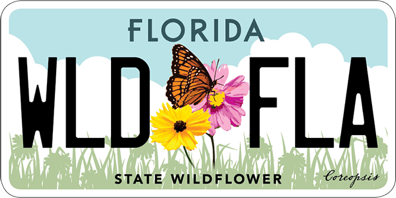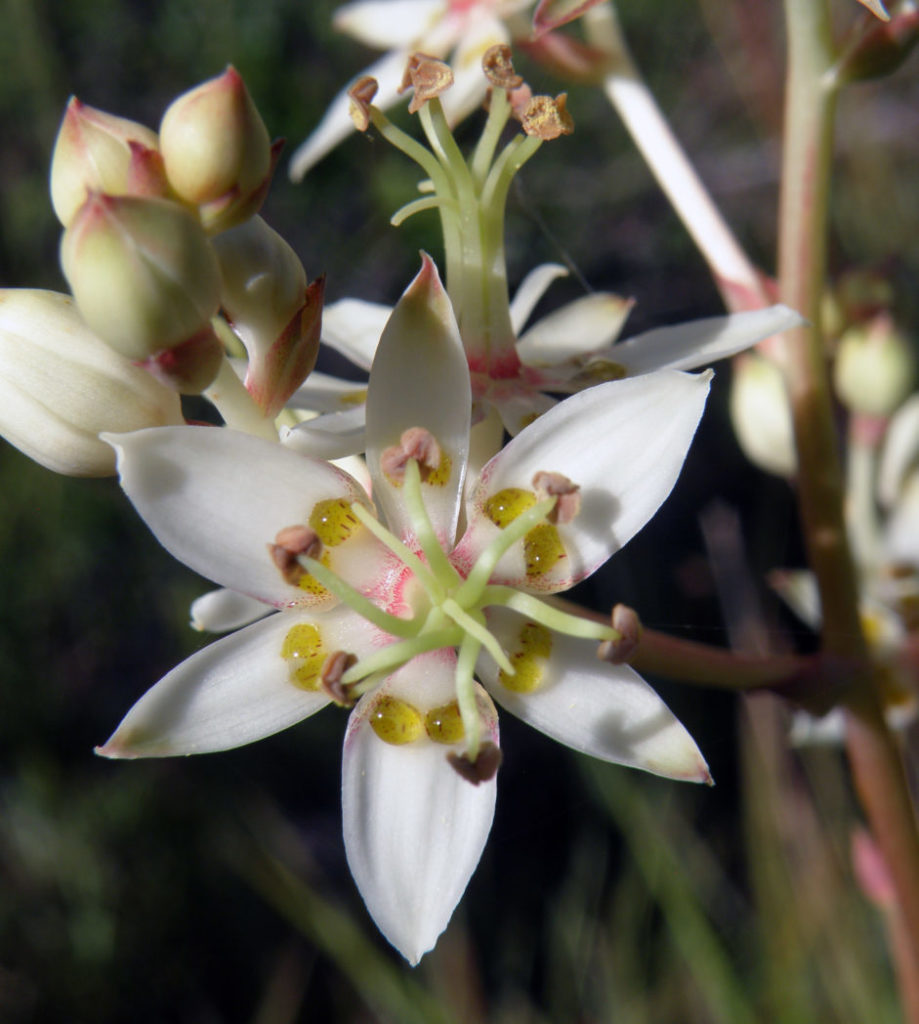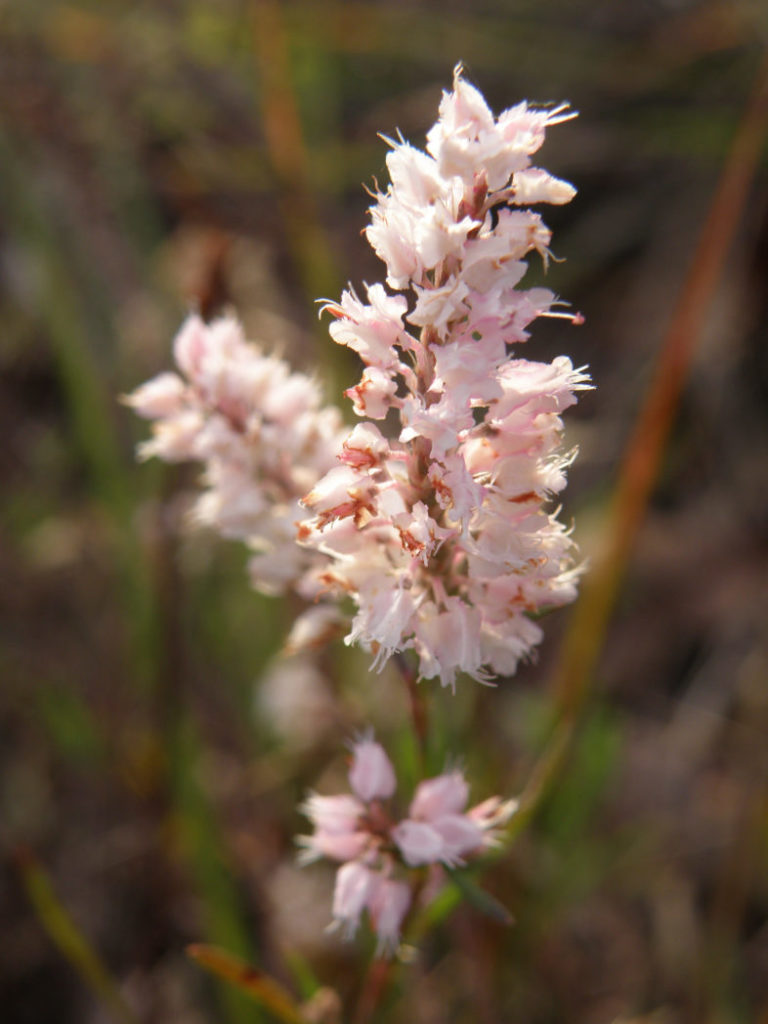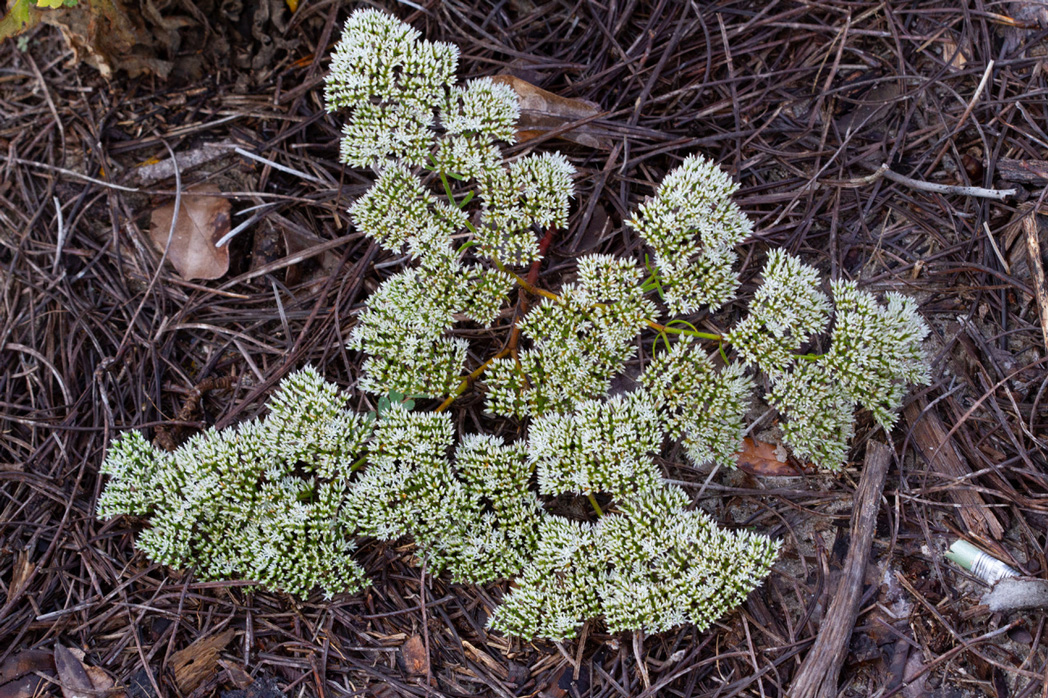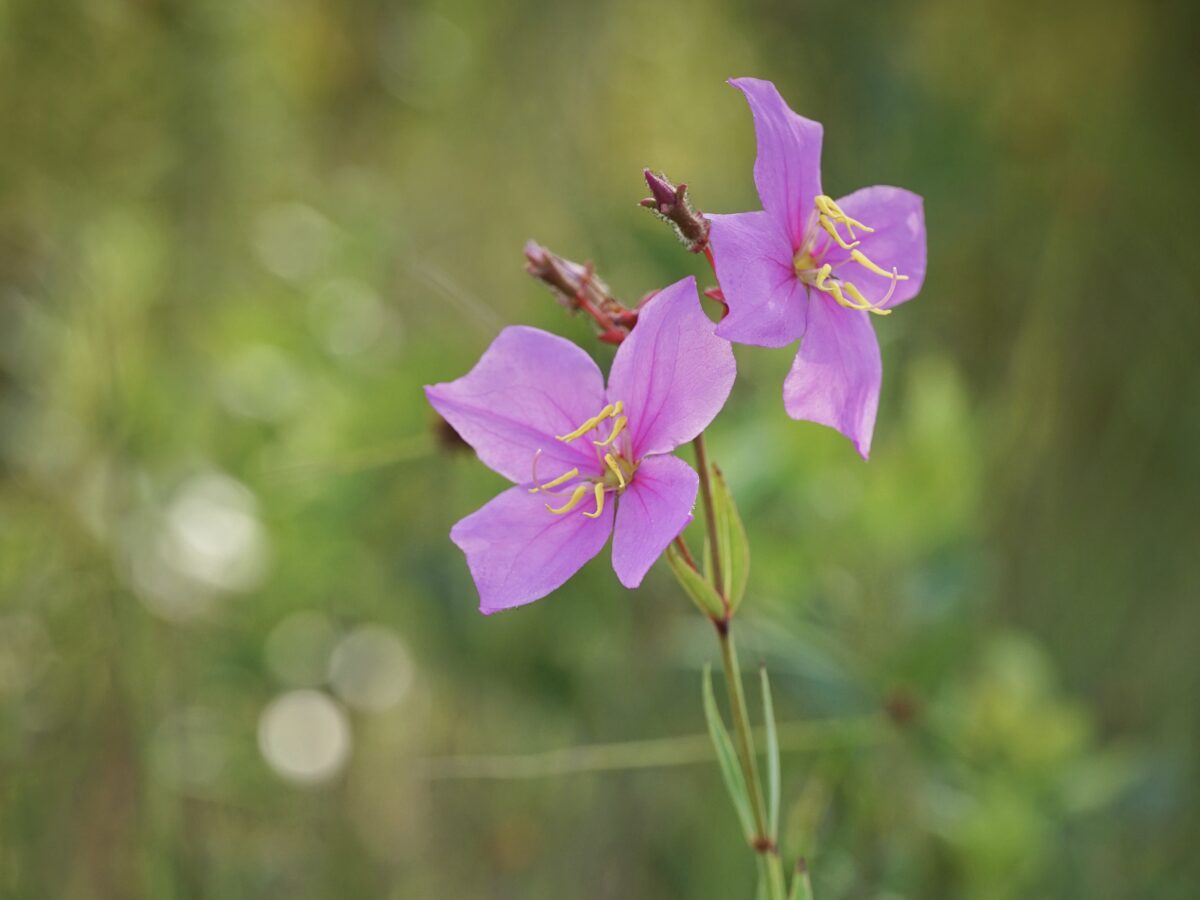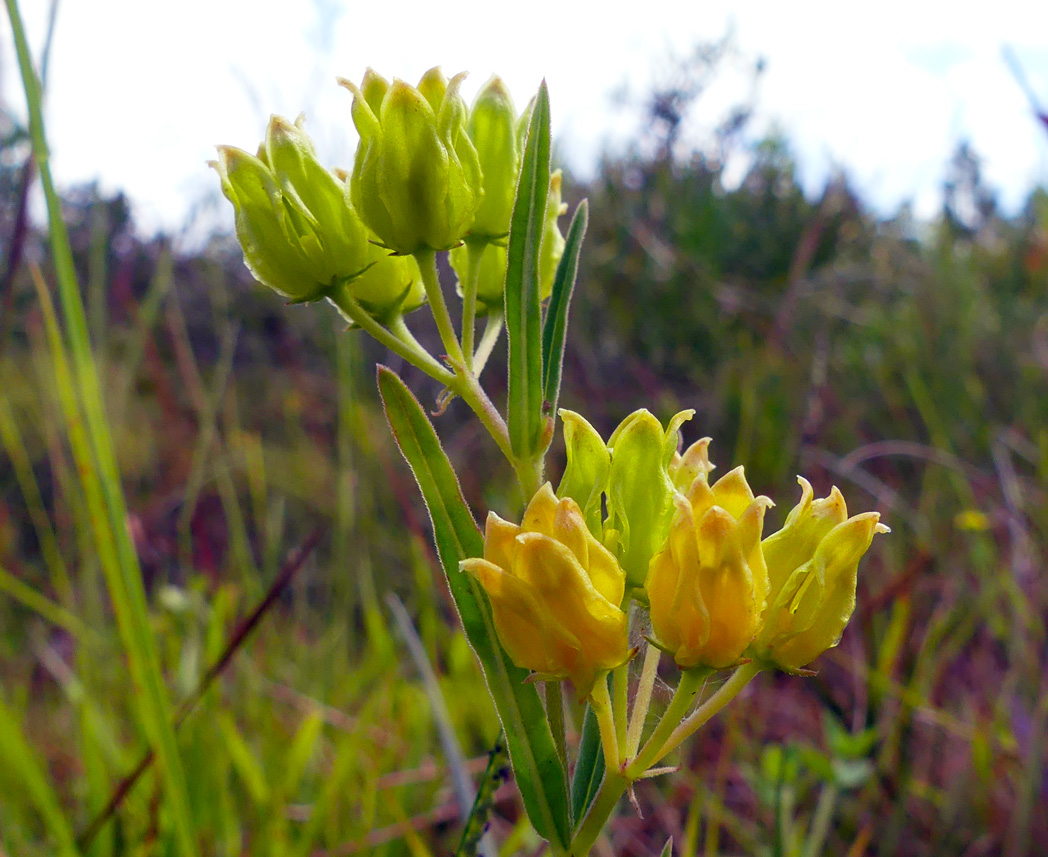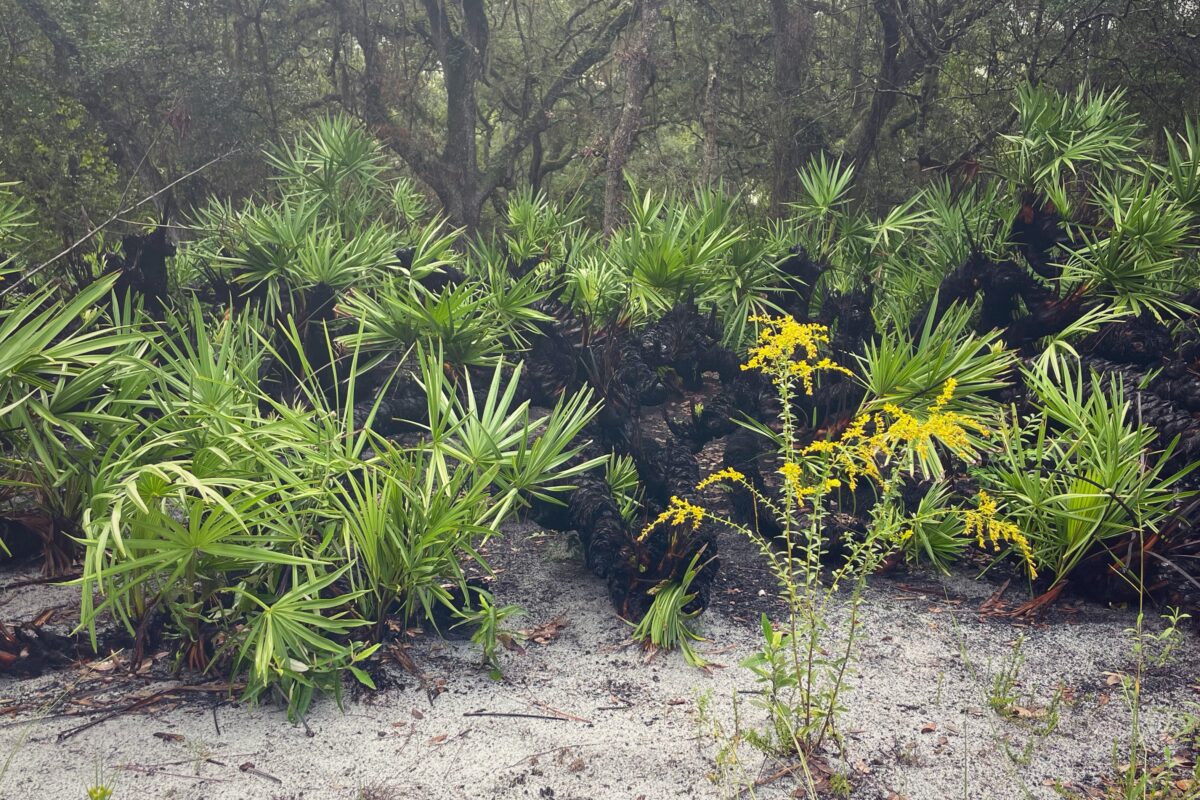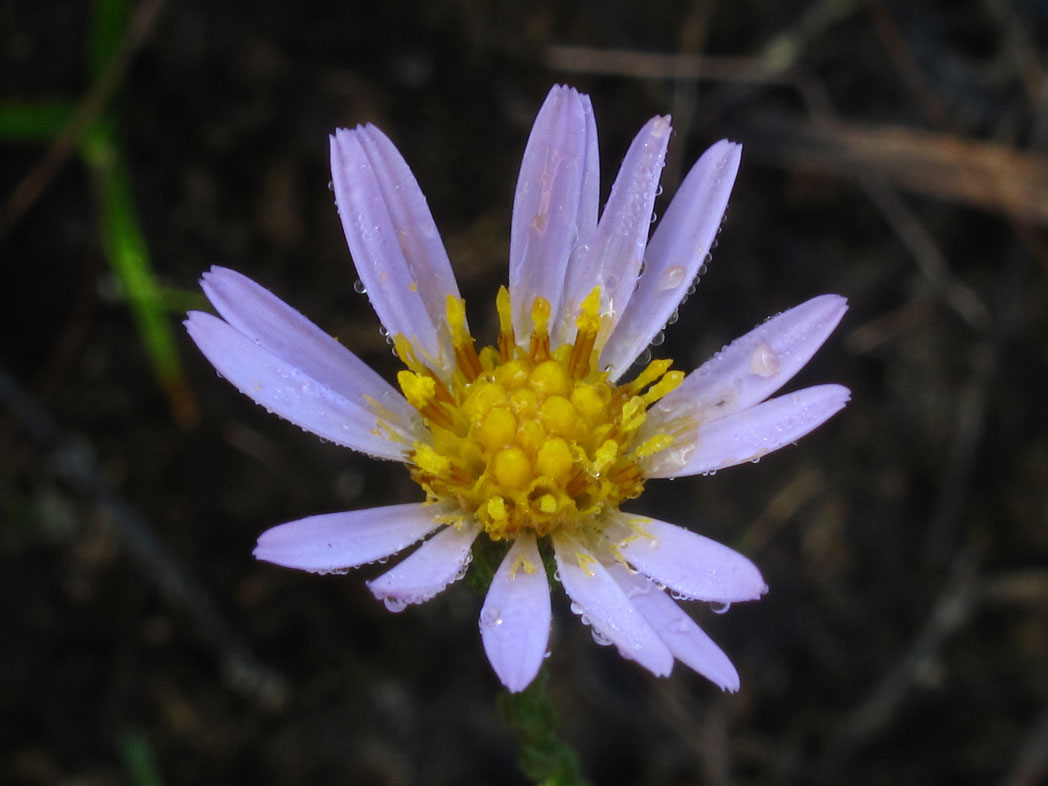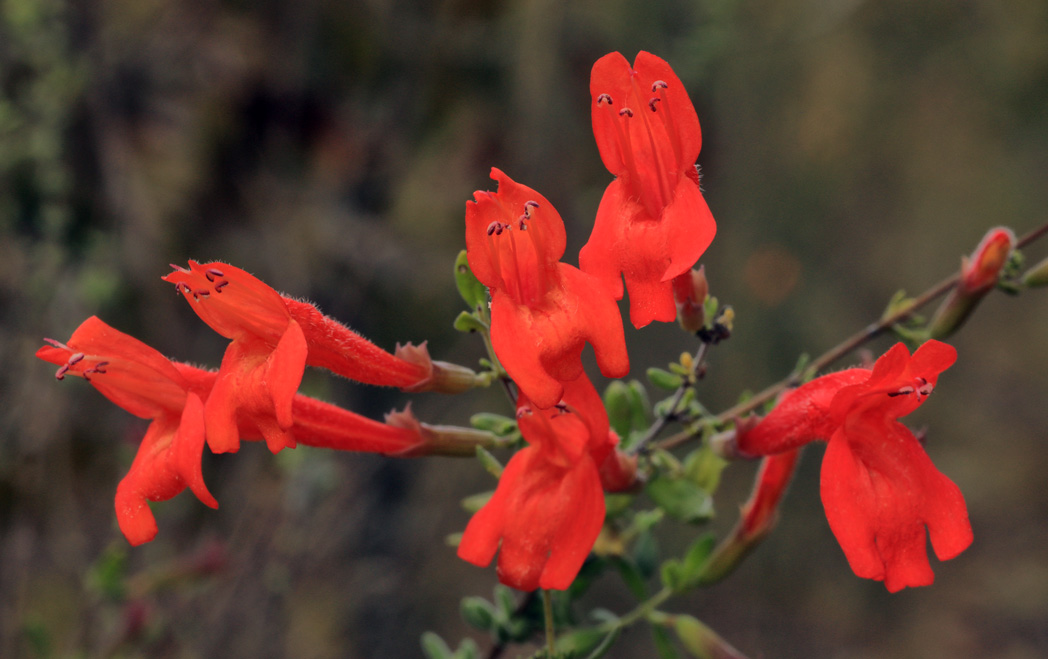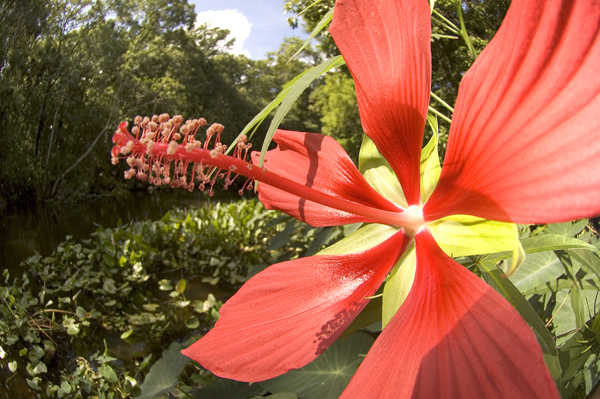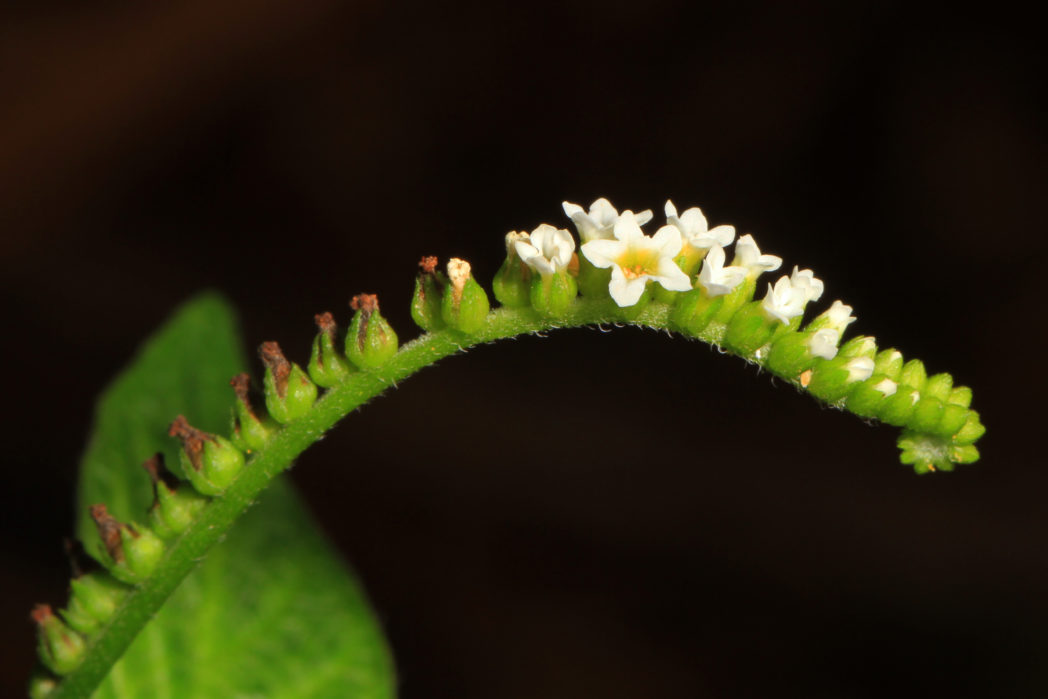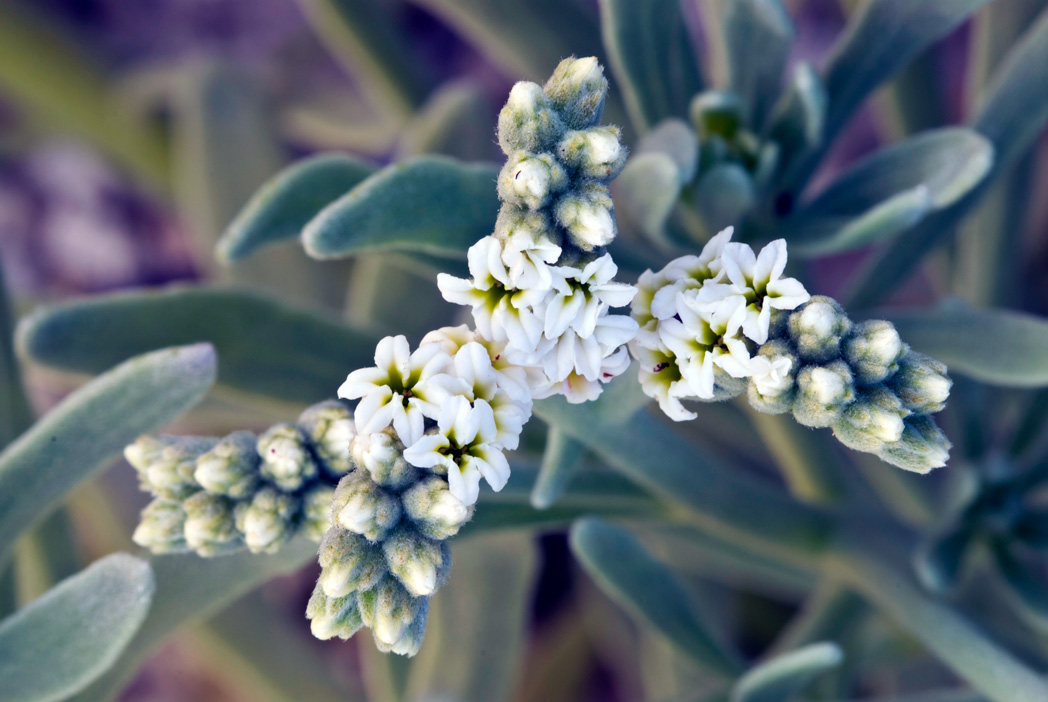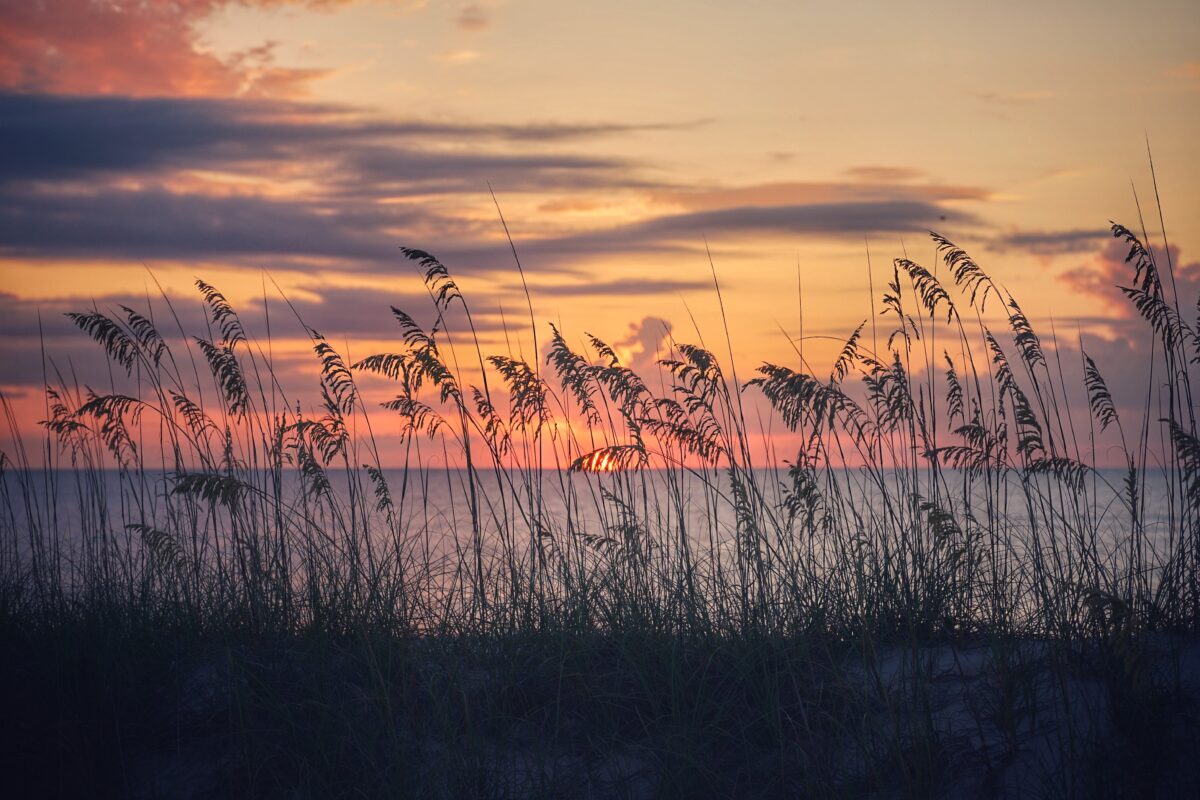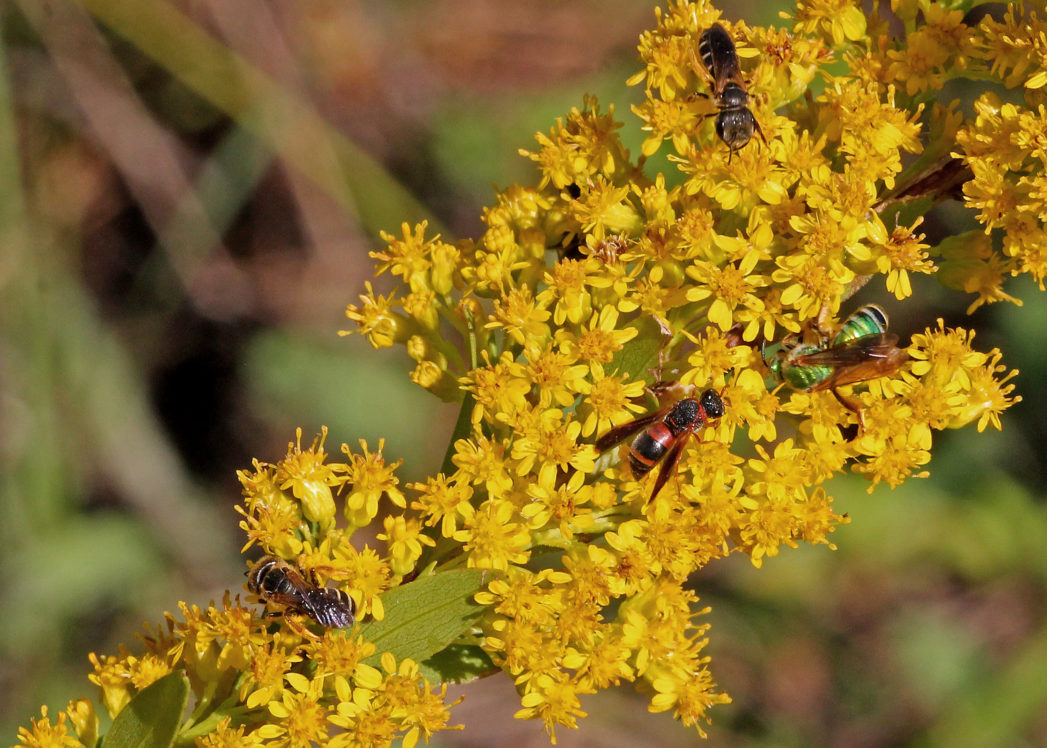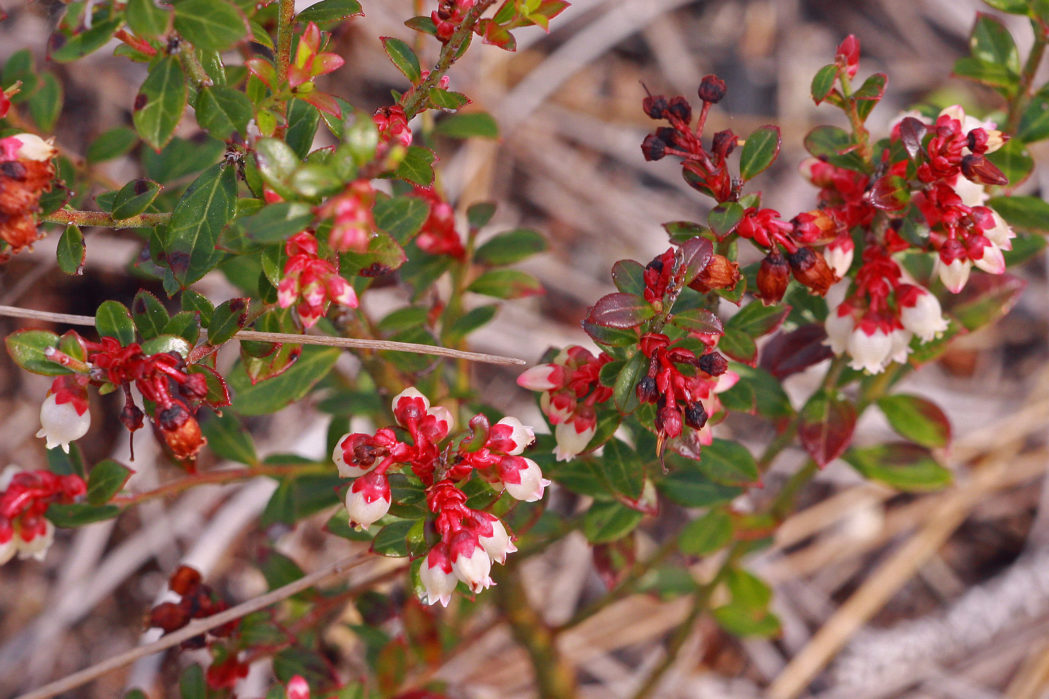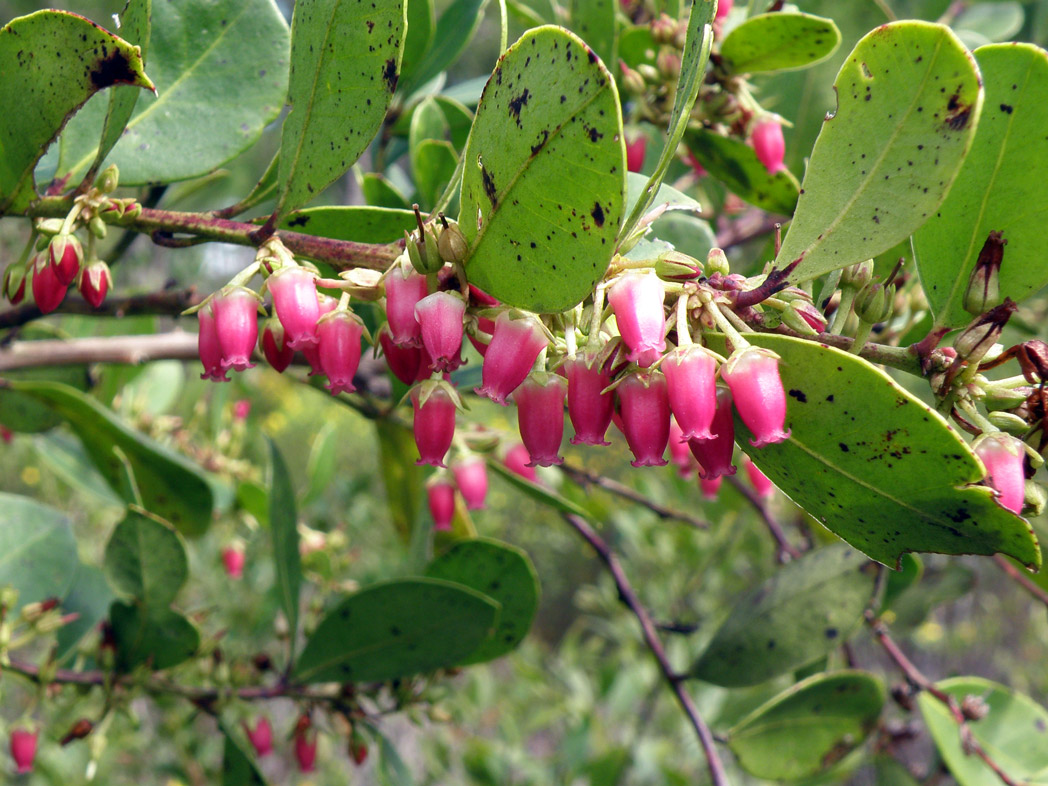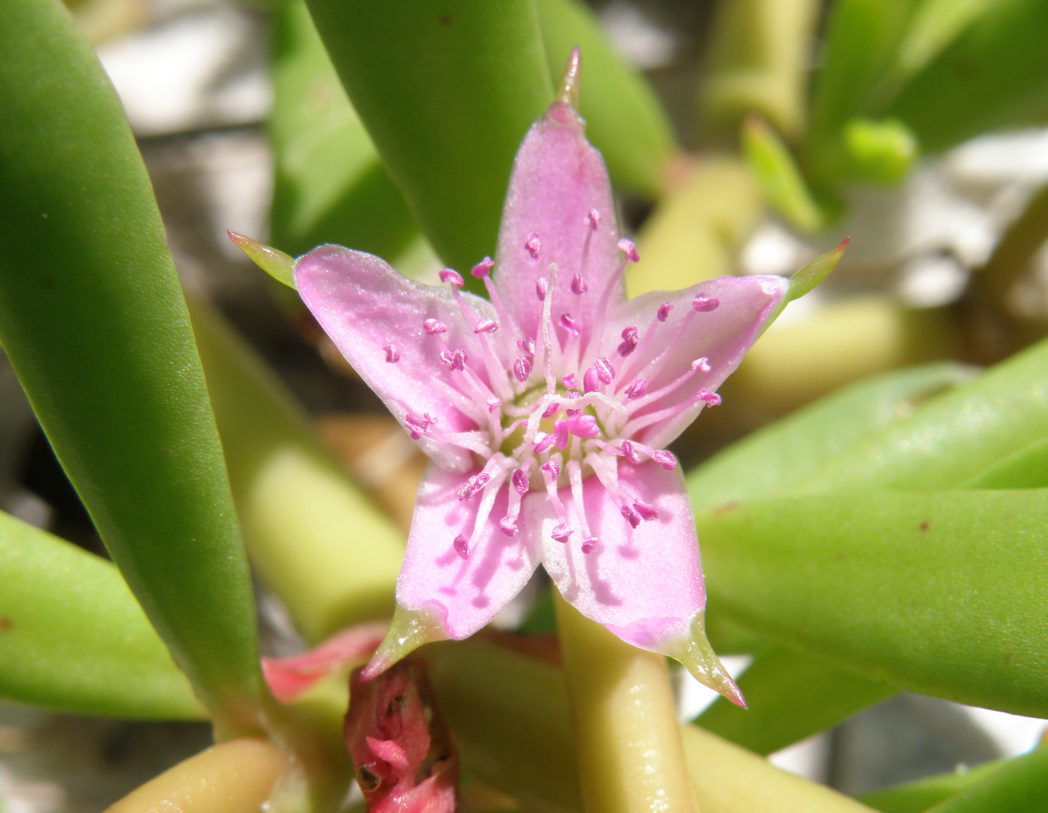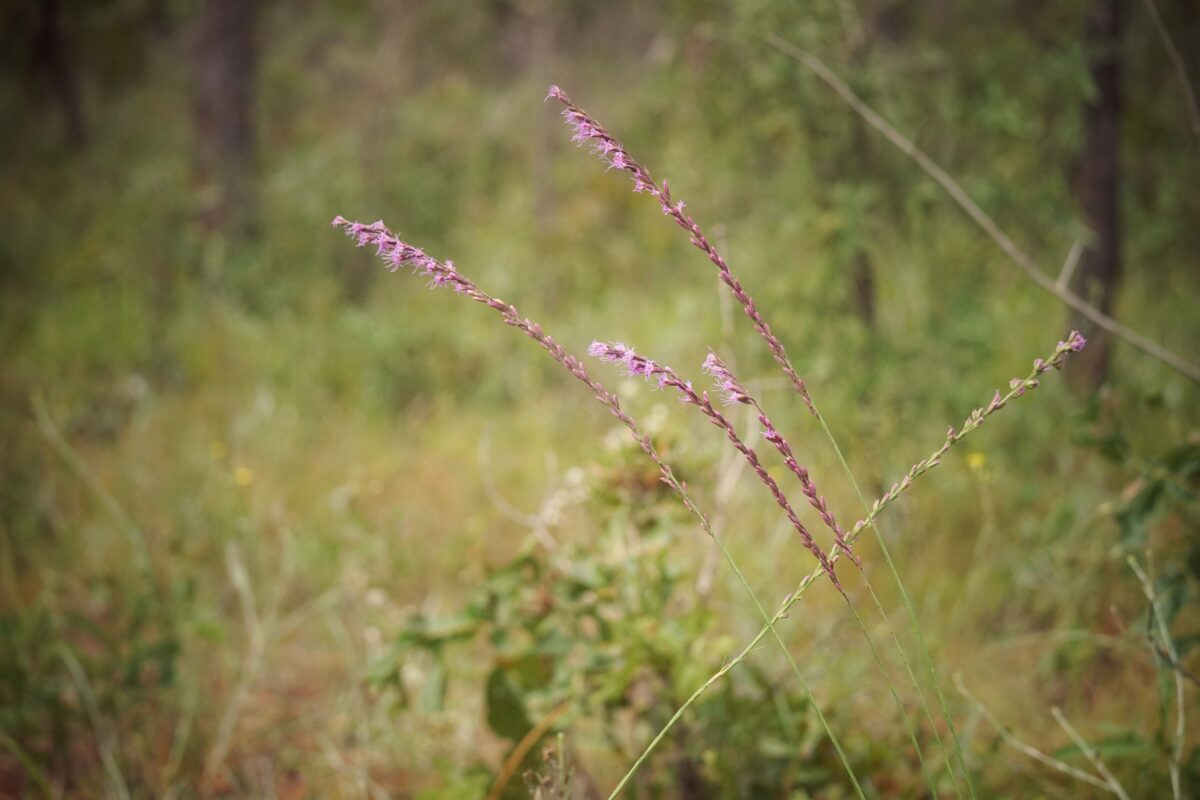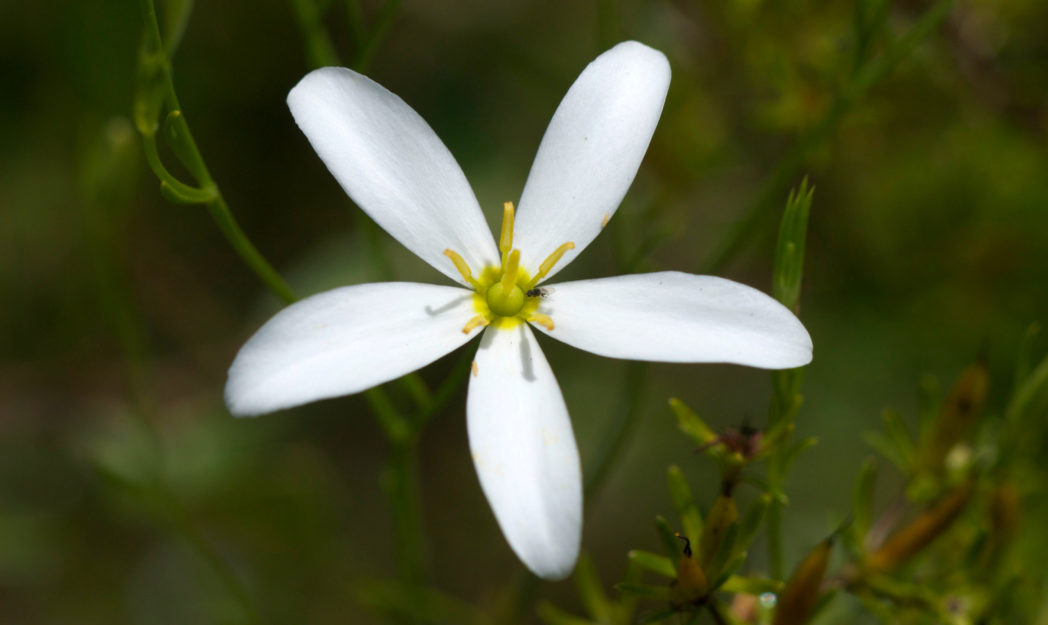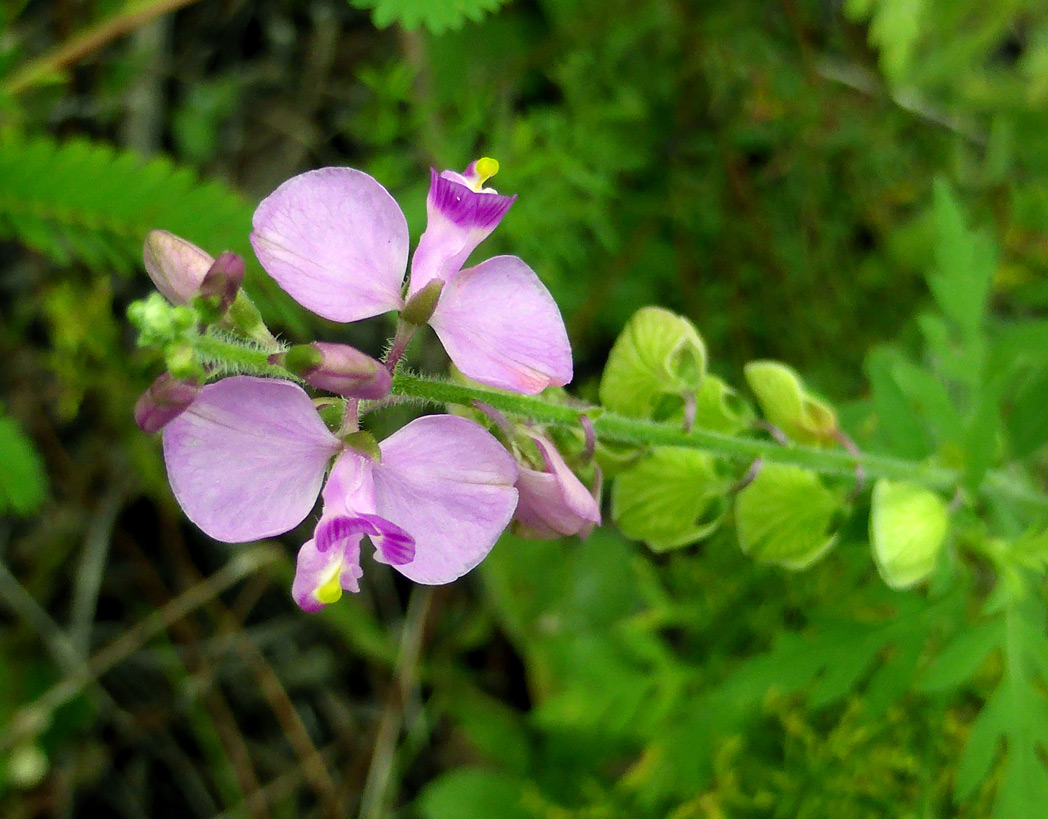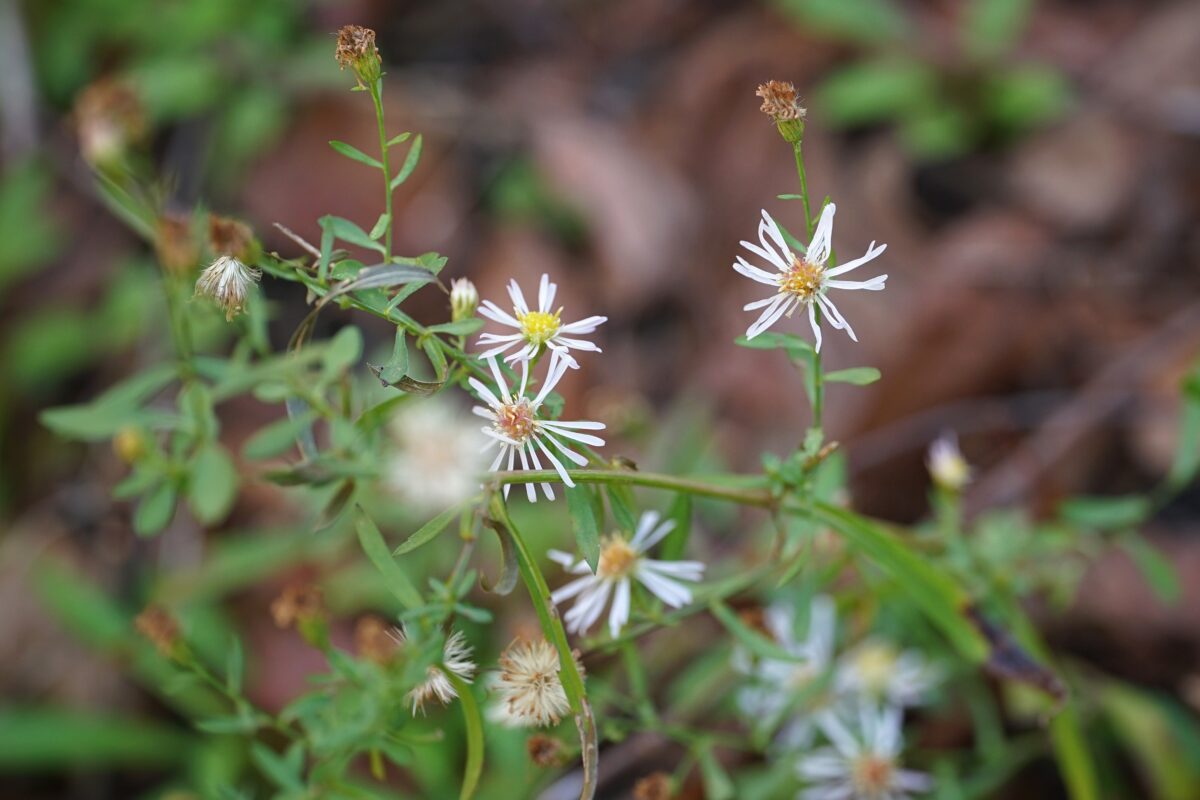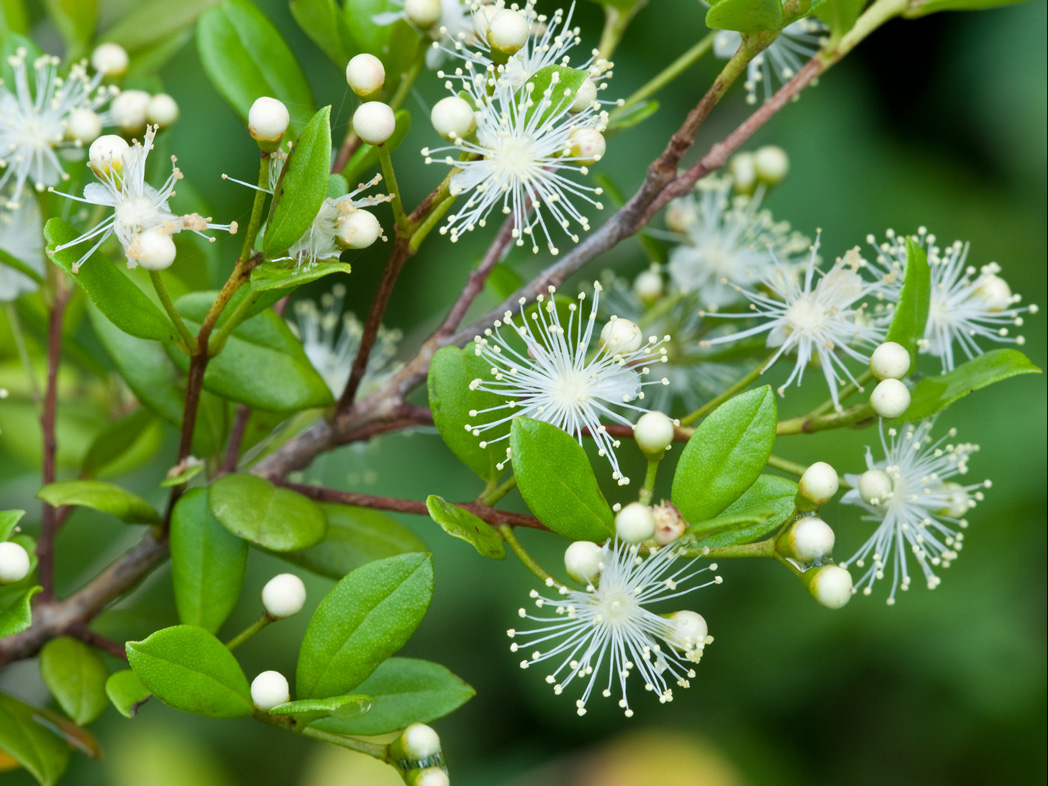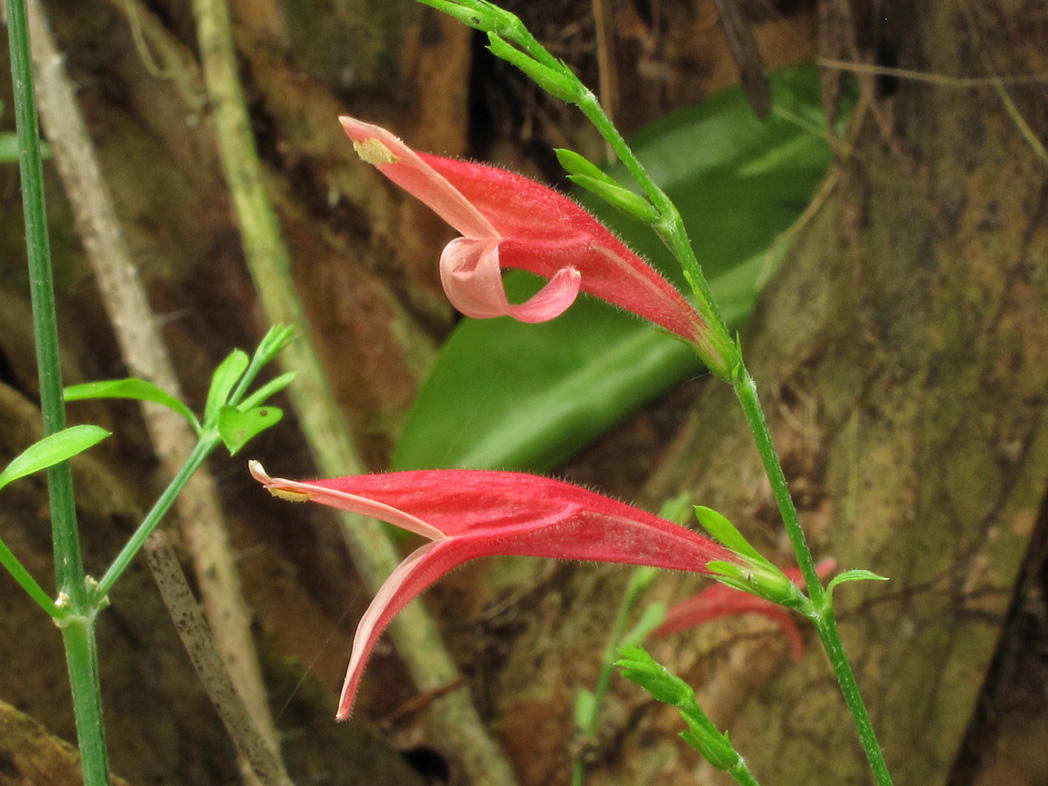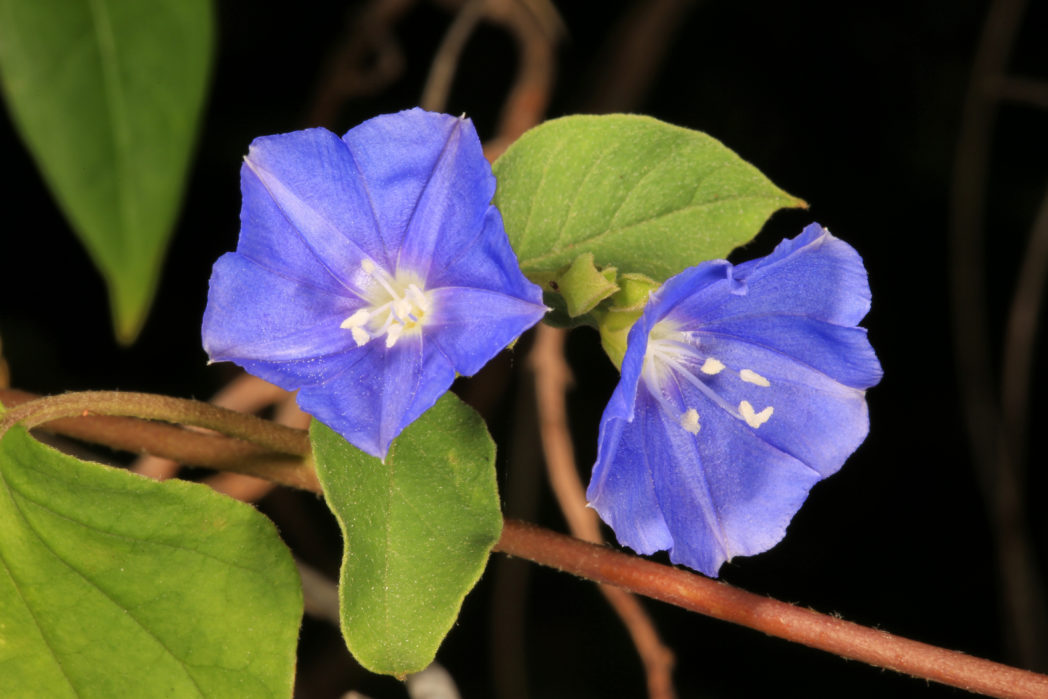Sandbog deathcamas
Sandbog deathcamas (Zigadenus glaberrimus) is a poisonous wildflower found in the Panhandle. Its many star-shaped flowers are cream-colored with greenish-gold glands at the base of their petals. It
Sandhill wireweed
Also known as Largeflower jointweed, Sandhill wireweed (Polygonum nesomii) is a deciduous woody shrub that produces an abundance of spike-like flowering clusters. It is mostly a summer and fall bloomer, with October being its most abundant blooming time, but year-round blooms are not uncommon. Sandhill wireweed is endemic to Florida. It occurs nowhere else in the world.
Sandsquares
Sandsquares (Paronychia rugelii) is one of Florida’s most unique wildflowers because as its name implies, it has a square inflorescence! It blooms summer into early fall, attracting mostly small bees.
Savannah false pimpernel
Savannah false pimpernel (Lindernia grandiflora) is a low-growing, mat-forming wildflower found in moist pinelands, marshes and swamps. Its diminutive yet flamboyant flowers bloom year-round, peaking in spring. They attract small insects; however, they are primarily self-pollinated. The plant is also known as Blue moneywort and Angel’s tears.
Savannah meadowbeauty
Of Florida’s 10 native meadowbeauties (Rhexia genus), the Savannah meadowbeauty (Rhexia alifanus) stands among the tallest at around 4 feet. Its bright pink blooms can be seen rising up like flags from the shorter vegetation of the pine flatwoods, wet savannahs and roadside ditches. It is pollinated by bees through a unique strategy called buzz pollination!
Savannah milkweed
With its diminutive stature and greenish-yellow flowers, Savannah milkweed (Asclepias pedicellata) is oft overlooked in its native pineland and prairie habitats. It blooms late spring through fall, peaking in summer.
Saw palmetto
Saw palmetto (Serenoa repens) is an evergreen shrub found in scrub, pinelands, coastal hammocks, and dunes throughout Florida. Dr. Mark Deyrup of Archbold Biological Station calls it the “most amazing plant in Florida.” He has counted 311 species that use Saw palmetto, while many other species have documented interlocking relationships with it.
Scaleleaf aster
Scaleleaf aster (Symphyotrichum adnatum) is hardly noticeable when not in bloom. But in late fall and early winter, its copious periwinkle blooms make for a showy display.
Scarlet calamint
The brilliant red flowers of Scarlet calamint (Calamintha coccinea) offer a dramatic contrast against the backdrop of scrub, sandhill and coastal dunes where the plant naturally occurs. The long, nectar-rich flowers are particularly attractive to hummingbirds and large butterflies. They bloom in abundance in early spring and late fall, but may flower sporadically throughout the year. In peak bloom, a single plant may produce 100 or more flowers.
Scarlet hibiscus
Scarlet hibiscus (Hibiscus coccineus) has large, crimson blooms that attract hummingbirds, butterflies and other pollinators. They remain open for only one day, but the plant produces many flowers throughout the summer.
Scorpionstail
Scorpionstail (Heliotropium angiospermum) is a shrub-like plant with unique white flowers that bloom year-round. Its nectar attracts a variety of butterflies including the Miami blue and Schaus’ swallowtail.
Sea lavender
Sea lavender (Heliotropium gnaphalodes) is an evergreen shrub found in dunes and thickets on the Atlantic coast of Central and South Florida. Its small but showy flowers emit a subtly sweet scent and attract many pollinators, especially butterflies.
Sea oats
There is nothing more iconic to the Florida summer coastal scene than Sea oats (Uniola paniculata) swaying to the sea breeze in the dunes. The flowers of this tall and sprawling grass provide pollen to a variety of insects, and the seeds are eaten by beach mice, rabbits and birds.
Seaside goldenrod
Seaside goldenrod (Solidago sempervirens ) blooms in showy masses on dunes, in swales and brackish marshes, on sandy soils in coastal areas, and occasionally inland throughout the state.
Shiny blueberry
Shiny blueberry (Vaccinium myrsinites) is a low evergreen shrub that flowers heavily in the spring. It occurs naturally in mesic pine flatwoods, sandhills, scrubby flatwoods, dry prairies and scrub habitats.
Shiny lyonia
Shiny lyonia (Lyonia lucida) is an erect woody evergreen shrub that produces a plethora of small, fragrant blooms in whitish-pink to pink to red.
Shoreline seapurslane
Shoreline seapurslane (Sesuvium portulacastrum) is a sprawling, evergreen wildflower with pink, star-shaped flowers. It is critical as a dune sand stabilizer as it catches sand between its leaves and stems.
Shortleaf gayfeather
Shortleaf gayfeather (Liatris tenuifolia) is endemic to the Southeastern Coastal Plain and thrives in the dry, well-drained sands of Florida’s scrub and pine flatwoods. The beautiful lavender fall blooms are a valuable food source for many pollinators.
Shortleaf rosegentian
Shortleaf rose gentian (Sabatia brevifolia) is an herbaceous annual wildflower that occurs in moist to wet pine flatwoods, coastal swales and wet prairies throughout Florida.
Showy milkwort
Despite its common name, Showy milkwort (Asemeia violacea) is a diminutive herbaceous wildflower with small flowers that are borne somewhat sparsely on terminal racemes. It is a summer-bloomer, but can bloom year-round in the southern part of the state. The flowers are attractive to bees, the plant’s primary pollinator. Showy milkwort occurs naturally in pinelands, prairies and open disturbed areas throughout Florida.
Simmond’s aster
Simmond’s aster (Symphyotrichum simmondsii) is endemic to the Southeastern Coastal Plain and while recorded from the Carolinas to Alabama, it is most prevalent throughout peninsular Florida.
Simpson’s stopper
Simpson’s stopper (Myrcianthes fragrans) has year-round blooms that attract a variety of butterflies and bees; its fruit provides food for many bird species.
Sixangle foldwing
Also known as False mint, Sixangle foldwing (Dicliptera sexangularis) is a modest yet eye-catching wildflower found in coastal hammocks and strands, ruderal areas and mangrove swamps, and along salt marsh edges. It typically flowers spring through early fall, but may bloom year-round. Its bright red blooms are particularly attractive to hummingbirds and butterflies. The plant is a larval host for the Cuban crescent butterfly.
Skyblue clustervine
Skyblue clustervine (Jacquemontia pentanthos) is an evergreen, twining vine with bright blue flowers that attract a variety of pollinators. It is endangered in Florida.
